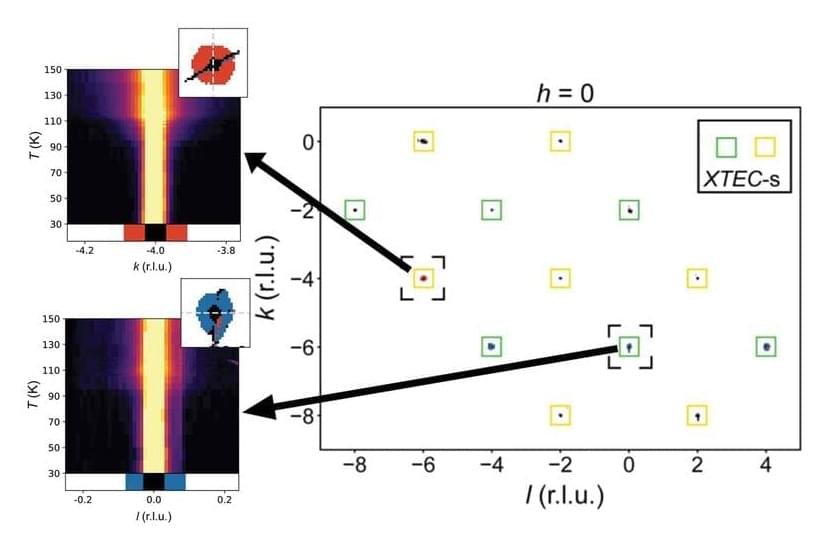Approach splits atmospheric carbon dioxide, but still has kinks to work out.



We’ve got a cybersecurity problem, but it’s not the one we think we have. The problem is how we think about cybersecurity problems.
Were you unable to attend Transform 2022? Check out all of the summit sessions in our on-demand library now! Watch here.
The problem is not that there are problems. The problem is expecting otherwise and thinking that having problems is a problem.
We’ve got a cybersecurity problem, but it’s not the one we think we have. The problem is in how we think about cybersecurity problems. Too many of us are stuck in a reactive loop, looking for silver bullet solutions, when we need to change how we view cybersecurity problems instead.

Scientists have reversed the direction of time with a quantum computer.
The breakthrough study seems to contradict basic laws of physics and could alter our understanding of the processes governing the universe.
In a development that also represents a major advance in our understanding of quantum computers, by using electrons and the strange world of quantum mechanics, researchers were able to turn back time in an experiment that is the equivalent of causing a broken rack of pool balls to go back into place.


Exploit code has been released for a critical vulnerability affecting networking devices with Realtek’s RTL819x system on a chip (SoC), which are estimated to be in the millions.
The flaw is identified as CVE-2022–27255 and a remote attacker could exploit it to compromise vulnerable devices from various original equipment manufacturers (OEMs), ranging from routers and access points to signal repeaters.

Almost 7 million users have attempted to install malicious browser extensions since 2020, with 70% of those extensions used as adware to target users with advertisements.
The most common payloads carried by malicious web browser extensions during the first half of 2022 belonged to adware families, snooping on browsing activity and promoting affiliate links.
This finding is based on telemetry data collected by Kaspersky, which reports over 1,300,000 attempts by users to install malicious extensions throughout H1 ‘22, an increase compared to last year’s figures.
Carnegie Mellon researchers have developed an open-source software that enables more agile movement in legged robots.
Robots can help humans with tasks like aiding disaster recovery efforts or monitoring the environment. In the case of quadrupeds, robots that walk on four legs, their mobility requires many software components to work together seamlessly. Most researchers must spend much of their time developing lower-level infrastructure instead of focusing on high-level behaviors.
Aaron Johnson’s team in the Robomechanics Lab at Carnegie Mellon University’s College of Engineering has experienced these frustrations firsthand. The researchers have often had to rely on simple models for their work because existing software solutions were not open-sourced, did not provide a modular framework, and lacked end-to-end functionality.

Color coding makes aerial maps much more easily understood. Through color, we can tell at a glance where there is a road, forest, desert, city, river or lake.
Working with several universities, the U.S. Department of Energy’s (DOE) Argonne National Laboratory has devised a method for creating color-coded graphs of large volumes of data from X-ray analysis. This new tool uses computational data sorting to find clusters related to physical properties, such as an atomic distortion in a crystal structure. It should greatly accelerate future research on structural changes on the atomic scale induced by varying temperature.
The research team published their findings in the Proceedings of the National Academy of Sciences in an article titled “Harnessing interpretable and unsupervised machine learning to address big data from modern X-ray diffraction.”


Cybersecurity researchers have elaborated a novel attack technique that weaponizes programmable logic controllers (PLCs) to gain an initial foothold in engineering workstations and subsequently invade the operational technology (OT) networks.
Dubbed “Evil PLC” attack by industrial security firm Claroty, the issue impacts engineering workstation software from Rockwell Automation, Schneider Electric, GE, B&R, Xinje, OVARRO, and Emerson.
Programmable logic controllers are a crucial component of industrial devices that control manufacturing processes in critical infrastructure sectors. PLCs, besides orchestrating the automation tasks, are also configured to start and stop processes and generate alarms.